Homestead Creek campground
Mutawintji National Park
Learn more
Learn more about why this park is special
Homestead Creek campground is in Mutawintji National Park. Here are just some of the reasons why this park is special:
A wildlife wonderland
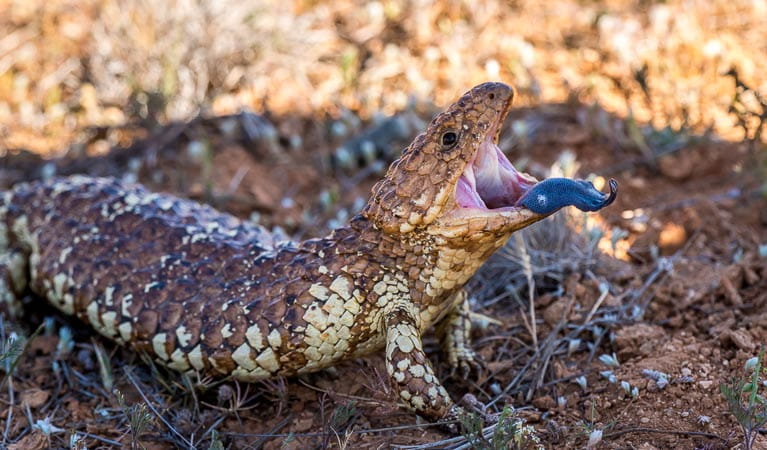
It might feel peaceful here, but Mutawintji teems with the wildlife that has occupied these lands since ancient times. You might see a wedge-tailed eagle or even a peregrine falcon and enjoy the chatter of noisy short-billed correllas, zebra finches, budgerigars, apostle birds and magpies. Crossing your path may be goannas and snakes, and look out for members of the only colony in NSW of the endangered yellow-footed rock wallaby. The largest of the rock-wallabies, it is Australia's most brightly coloured mammal - look for them on rocky ridges in the park.
- Homestead Gorge walking track Take a breathtaking walk along Homestead Gorge walking track for scenic landscape vistas and ancient Aboriginal rock engravings. Plus you might see wallabies, emus and birds.
- Old Coach Road drive The Old Coach Road drive is a piece of Australian history, following a section of the historic Broken Hill to White Cliffs Coach Run that connected these two outback towns.
An important Aboriginal site
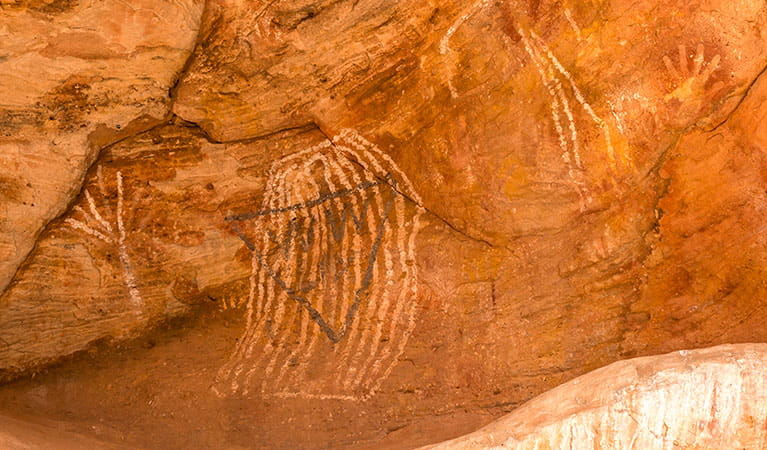
The traditional home of the Pantjikali, Wanyuparlku, Wilyakali and Malyangapa people, Mutawintji National Park has been a significant meeting place for local cultures for thousands of years. Communities have performed initiations, rainmaking and other ceremonies here in gatherings of up to 1000 people. A short, easy walk, suitable for wheelchairs, will guide you amid the splendour of Mutawintji's gorges to the rocky overhang Thaaklatjika (Wright's Cave). Here you'll find paintings, stencils and engravings that depict pre and post colonial Aboriginal history, as well as the animals that live in the area, including kangaroos and emus.
- Homestead Gorge walking track Take a breathtaking walk along Homestead Gorge walking track for scenic landscape vistas and ancient Aboriginal rock engravings. Plus you might see wallabies, emus and birds.
- Mutawintji cultural festival Book your tickets for the Mutawintji cultural festival at Mutawintji National Park from 9 to 10 August 2024. This family friendly 2-day celebration of Aboriginal culture includes dance, music and guid...
- Rockholes Loop walking track Rockholes Loop walking track is an adventurous extension to Homestead Gorge walking track, in Mutawintji National Park. This short but steep hike includes Aboriginal engravings and splendid views of r...
Iconic scenery
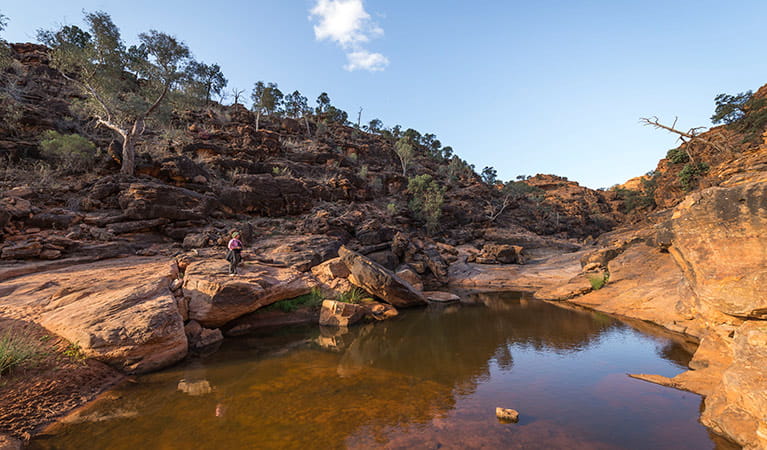
Mutawintji National Park displays the classic outback landscape for which Australia is famous around the world. Driving along red dirt roads among rugged gorges and desert, against the backdrop of the ever-changing colour of the Byngnano Ranges, you'll discover the peace and space of the desert. Beyond the ridges, the saltbush and mulga plains stretch to the horizon, making city life seem a long, long way away.
- Homestead Gorge walking track Take a breathtaking walk along Homestead Gorge walking track for scenic landscape vistas and ancient Aboriginal rock engravings. Plus you might see wallabies, emus and birds.
- Mutawintji cultural festival Book your tickets for the Mutawintji cultural festival at Mutawintji National Park from 9 to 10 August 2024. This family friendly 2-day celebration of Aboriginal culture includes dance, music and guid...
- Mutawintji Gorge walking track Mutawintji Gorge walking track takes you on a hike through one of the park’s most scenic gorges. Enjoy a picnic at the end or simply spend some time taking in the view.
- Rockholes Loop walking track Rockholes Loop walking track is an adventurous extension to Homestead Gorge walking track, in Mutawintji National Park. This short but steep hike includes Aboriginal engravings and splendid views of r...
Plants and animals protected in this park
Animals
-
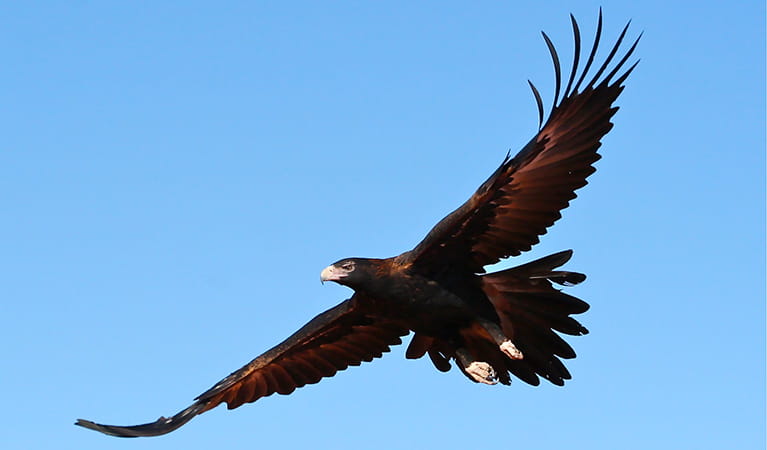
Wedge-tailed eagle (Aquila audax)
With a wingspan of up to 2.5m, the wedge-tailed eagle is Australia’s largest bird of prey. These Australian animals are found in woodlands across NSW, and have the ability to soar to heights of over 2km. If you’re bird watching, look out for the distinctive diamond-shaped tail of the eagle.
-
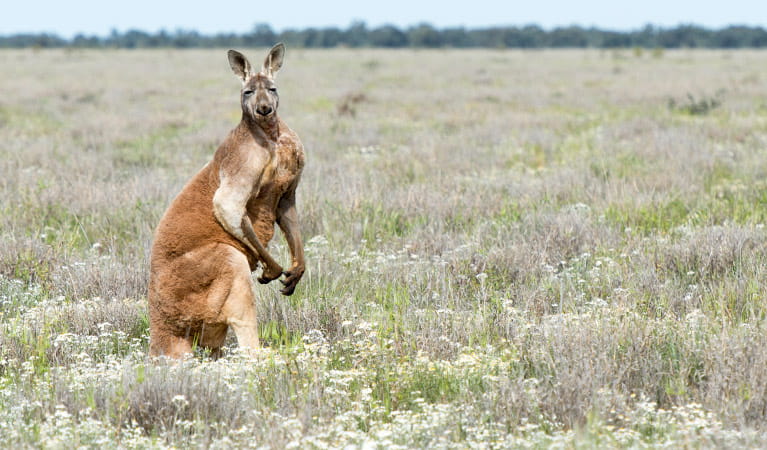
Red kangaroo (Macropus rufus)
The red kangaroo is one of the most iconic Australian animals and the largest marsupial in the world. Large males have reddish fur and can reach a height of 2m, while females are considerably smaller and have blue-grey fur. Red kangaroos are herbivores and mainly eat grass.
-
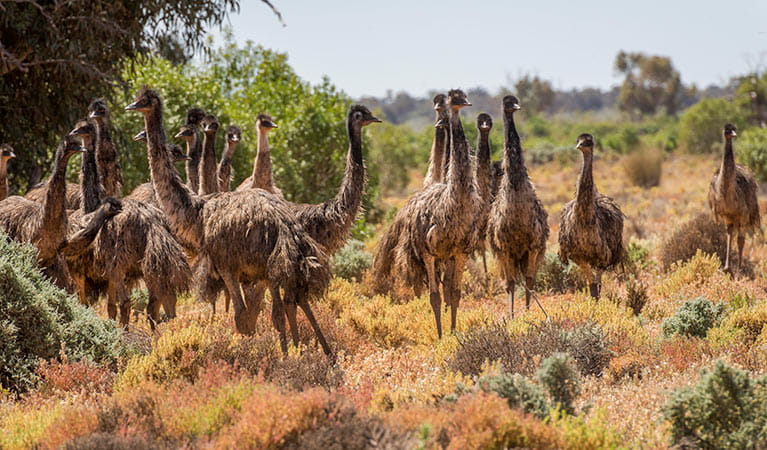
Emu (Dromaius novaehollandiae)
The largest of Australian birds, the emu stands up to 2m high and is the second largest bird in the world, after the ostrich. Emus live in pairs or family groups. The male emu incubates and rears the young, which will stay with the adult emus for up to 2 years.
Plants
-
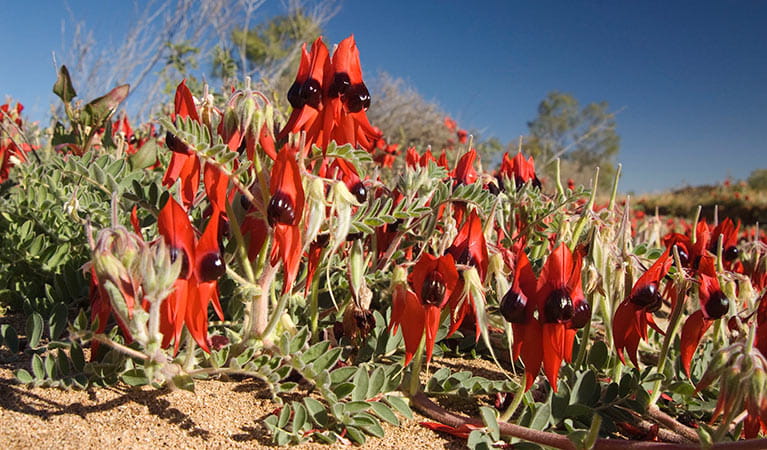
Sturt's desert pea (Swainsona formosa)
One of Australia’s most famous desert wildflowers, Sturt’s desert pea is found across inland arid regions of Australia, including far west NSW. One of the most easily-recognised Australian native plants, Sturt’s desert pea thrives in red sandy soil, or loam, and has vibrant red leaf-shaped flowers with a black centre, known as a ‘boss’.
-
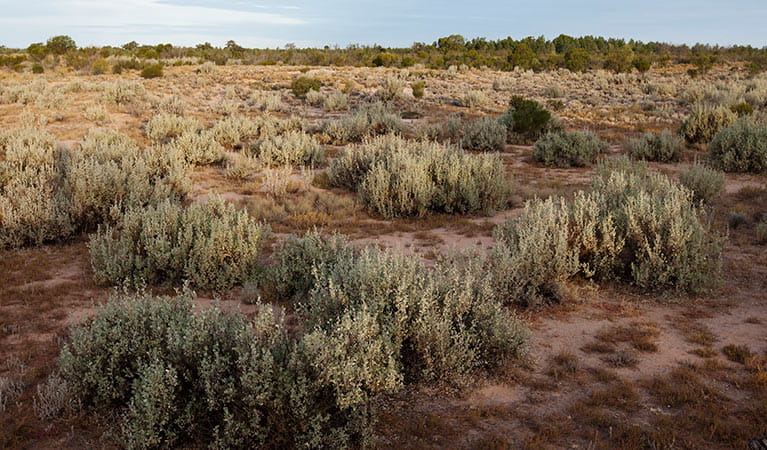
Saltbush (Atriplex nummularia)
A hardy Australian native plant, the saltbush is a small spreading shrub that can withstand dry salty soils such as those found in the desert plains of western NSW. It is grey-white in colour and has small spear-shaped succulent leaves. It flowers from December to April.
Look out for...
Red kangaroo
Macropus rufus
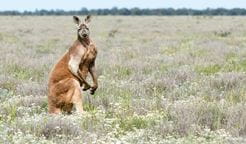
The red kangaroo is one of the most iconic Australian animals and the largest marsupial in the world. Large males have reddish fur and can reach a height of 2m, while females are considerably smaller and have blue-grey fur. Red kangaroos are herbivores and mainly eat grass.